Disclosure: This article contains affiliate links. We may earn a commission from purchases at no extra cost to you, which helps our travel content.
Hong Kong's iconic skyline and bustling streets have graced countless Instagram feeds, yet this city of contrasts holds so many visual treasures beyond the postcard views. As someone who's spent years seeking out the textural nuances of island communities, I've developed a knack for finding places where artistic composition and cultural authenticity intersect. During my recent autumn week in Hong Kong, I ventured away from the tourist hordes with my mirrorless camera in hand, my sculptor's eye drawn to the interplay of light, form, and heritage that defines this fascinating metropolis. What I discovered were pockets of visual poetry—places where Hong Kong's soul reveals itself through unexpected angles and quieter moments. Whether you're a serious photographer or simply looking to capture memories beyond the ordinary, these 12 spots will reward your adventurous spirit with images that tell a deeper story of Hong Kong.
Capturing Verticality: Hidden Urban Canyons
Hong Kong's density creates a vertical world unlike anywhere else—a three-dimensional urban canvas that rewards those who look up. Skip the obvious shots from Victoria Peak and instead head to Quarry Bay, where the now-famous 'Monster Building' (Yik Cheong Building) offers a mesmerizing study in repetition and scale. But venture just two blocks away to Montane Mansion for an equally impressive but far less crowded composition.
My favorite discovery was in the narrow lanes of Sham Shui Po district, where laundry lines create geometric patterns against the sky between tightly packed residential towers. The contrast between intimate domestic life and overwhelming urban scale creates images that speak to Hong Kong's unique character.
For a truly unique vertical perspective, visit Lok Fu Place mall's central atrium around 4pm when light beams cut dramatically through the architecture. Position yourself on the ground floor looking up through the geometric glass ceiling for a shot that plays with symmetry and scale in surprising ways.
I spent an entire afternoon exploring these urban canyons with my wide-angle lens, which proved essential for capturing these tight spaces while maintaining architectural integrity. The fall season's clear skies provided perfect contrast against the buildings' facades.
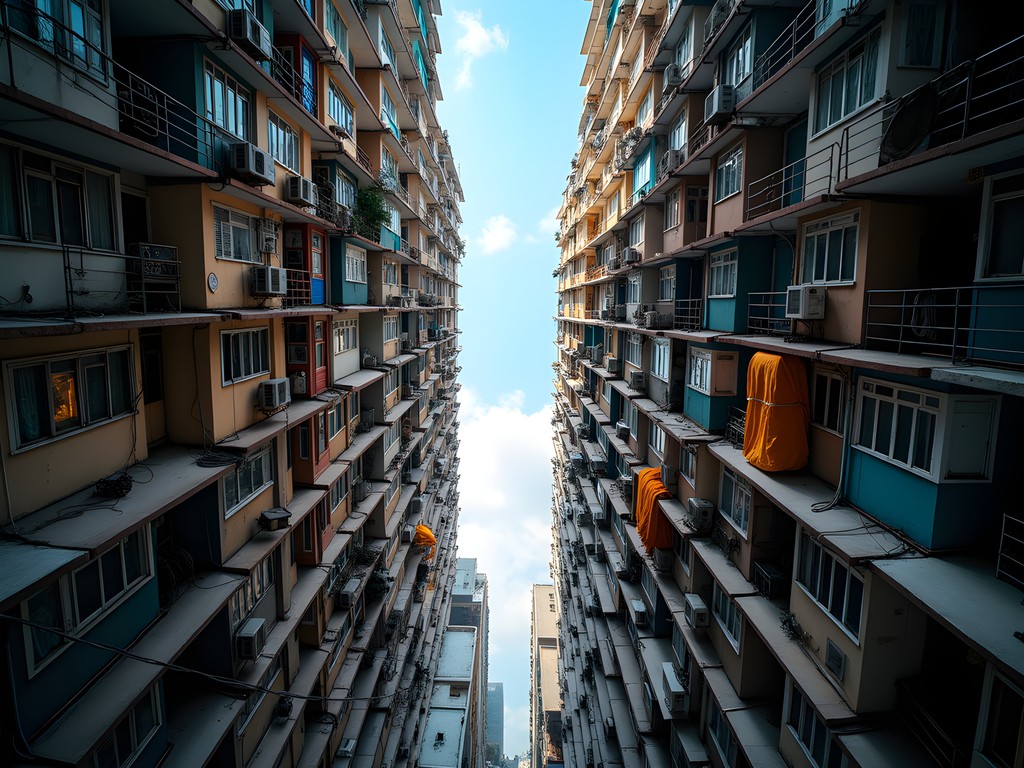
💡 Pro Tips
- Visit Sham Shui Po's vertical scenes in late afternoon when laundry is typically hung out to dry
- Use a wide-angle lens with minimal distortion to capture architectural details accurately
- Look for contrasting colors between buildings to create visual interest in your compositions
Ghost Signs and Vanishing Typography
My fascination with texture and form naturally drew me to Hong Kong's rapidly disappearing neon signs and hand-painted typography. While many photographers capture the famous neon corridors of Nathan Road, I found richer hunting grounds in the back streets of Yau Ma Tei and Jordan.
On Shanghai Street between Jordan and Yau Ma Tei stations, I discovered a treasure trove of vintage shop signs, many featuring hand-painted Chinese characters alongside English text in styles dating back decades. The juxtaposition of these weathered signs against modern developments creates a poignant visual narrative about Hong Kong's changing identity.
For the most atmospheric shots, I visited during the 'blue hour' just after sunset when neon begins to glow but ambient light still reveals architectural details. The fall season's comfortable temperatures meant I could spend hours wandering these streets without the summer humidity that can fog lenses and dampen enthusiasm.
My most successful images came from Mong Kok's back alleys, where I discovered an elderly sign painter touching up a traditional shop front. The warm glow of his work lamp against the deepening blue twilight created a cinematic moment that spoke volumes about craft and continuity in a rapidly changing urban landscape.
I found my prime lens invaluable here—its wide aperture allowing me to shoot handheld in low light while maintaining the atmospheric quality that makes these signs so compelling.
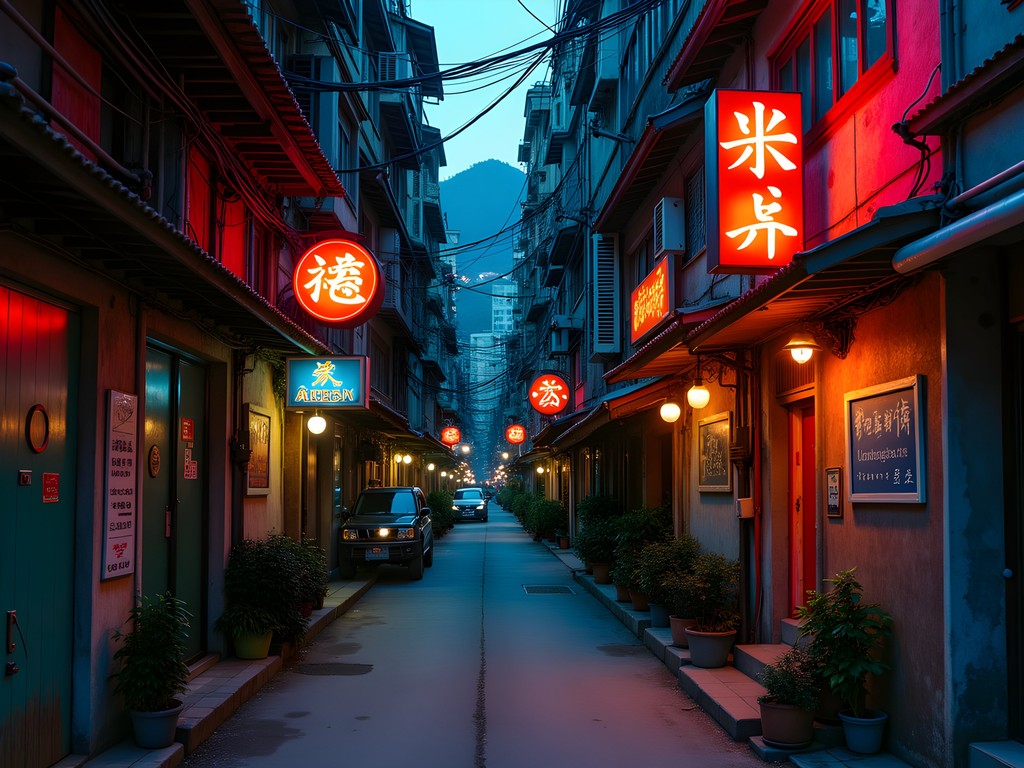
💡 Pro Tips
- Visit sign-rich areas during 'blue hour' (20-30 minutes after sunset) for the perfect balance of neon glow and ambient light
- Look for reflections of signs in puddles or shop windows for creative compositions
- Speak with shop owners—many have stories about their signs and might allow interior shots
Floating Worlds: Water-Based Perspectives
Hong Kong's identity is inextricably linked to water, yet surprisingly few visitors explore its maritime perspectives. Beyond the standard Star Ferry crossing (which admittedly offers wonderful views), I discovered several water-based vantage points that provide fresh angles on this photogenic city.
My first revelation came at Sai Wan Swimming Shed in Kennedy Town—a wooden structure extending into the sea that once served as a changing facility for swimmers. Arriving before sunrise, I found myself alone with a perfect westward view of Stonecutters Bridge silhouetted against the dawn sky, with fishing boats creating foreground interest. The wooden planks leading into the water create natural leading lines for compositions that feel both nostalgic and timeless.
For a completely different water perspective, I took a sampan (small wooden boat) tour of Aberdeen Harbour, weaving between the floating village's remaining traditional houseboats. These intimate waterways offer glimpses into a maritime way of life that's rapidly disappearing, with the contrast between floating homes and towering apartments creating compelling visual stories.
Perhaps my most unexpected discovery was the view from Lei Yue Mun, a fishing village on the eastern edge of Kowloon. From its waterfront promenade, you can capture a perfectly framed shot of Hong Kong Island's skyline through a narrow channel, with traditional fishing boats in the foreground. Visit around 6pm in fall for golden light on the buildings, then stay as the city lights begin to twinkle on.
For these water shoots, I relied heavily on my travel tripod which proved remarkably stable even on rocking boats and weathered docks. Its compact size meant I could carry it easily throughout the day until these golden-hour opportunities arose.
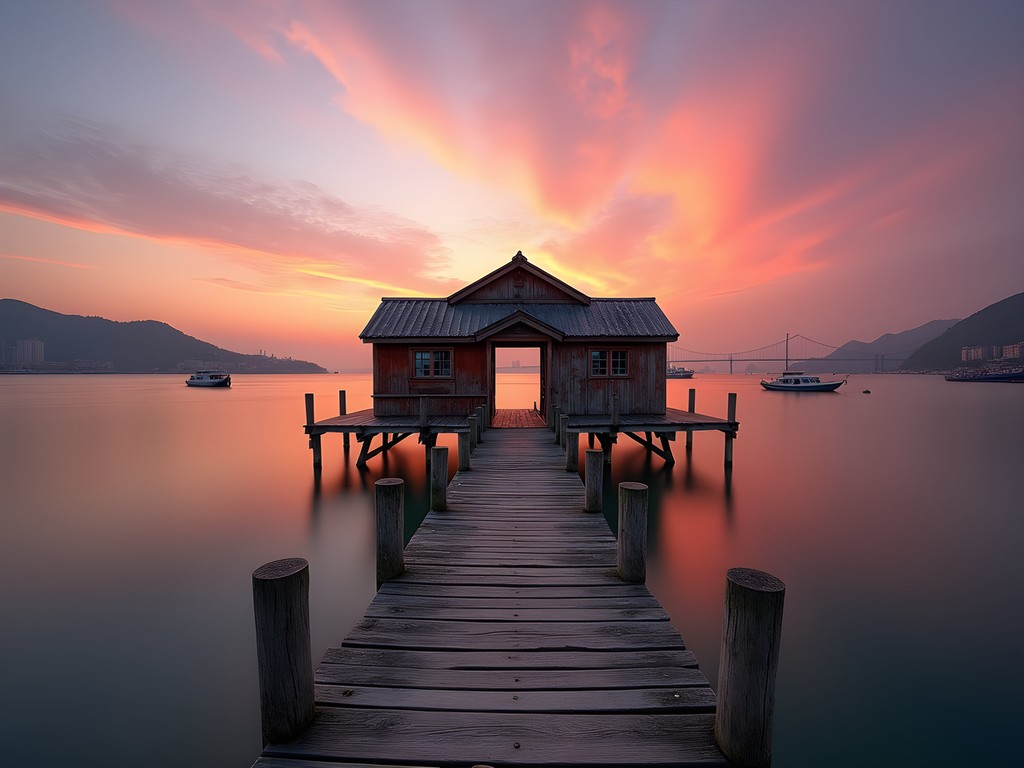
💡 Pro Tips
- Arrive at Sai Wan Swimming Shed at least 30 minutes before sunrise to secure a good position
- Book a private sampan in Aberdeen rather than the tourist boats for more flexibility in stopping for photos
- Bring lens cleaning supplies as water spray can be an issue during boat-based photography
Industrial Heritage Reimagined
As a sculptor with a deep appreciation for form and material, Hong Kong's repurposed industrial spaces proved irresistible to my lens. While many visitors know about PMQ (the former Police Married Quarters turned creative hub), fewer discover the photographic potential of other transformed spaces.
The most visually rewarding was Tai Nan Street in Sham Shui Po, where former textile factories have been converted into design studios and cafés. The industrial bones remain visible—concrete pillars, exposed pipes, and factory windows—creating a perfect backdrop for compositions that tell stories of urban transformation. The fall light filtering through large factory windows created dramatic shadows and light patterns across textured concrete surfaces.
In Wong Chuk Hang, I spent a fascinating afternoon exploring the industrial buildings that now house galleries and creative spaces. The Ovolo Southside hotel, converted from a warehouse, features an exterior glass elevator that offers ascending views of the neighborhood's industrial-to-artistic evolution. The rooftop bar provides a rarely-seen perspective of Hong Kong's southern district against distant mountains.
Perhaps my most surprising industrial discovery was the former Lai Chi Kok Hospital, now partially open as a heritage site. Its red-brick colonial architecture stands in stark contrast to surrounding high-rises, creating compositions that speak to Hong Kong's layered history. The fall foliage beginning to turn around the grounds added warm color accents to the industrial textures.
For these locations with challenging lighting conditions—from dim interiors to bright windows—I relied on my camera's excellent dynamic range and occasionally used exposure bracketing to capture detail in both shadows and highlights.
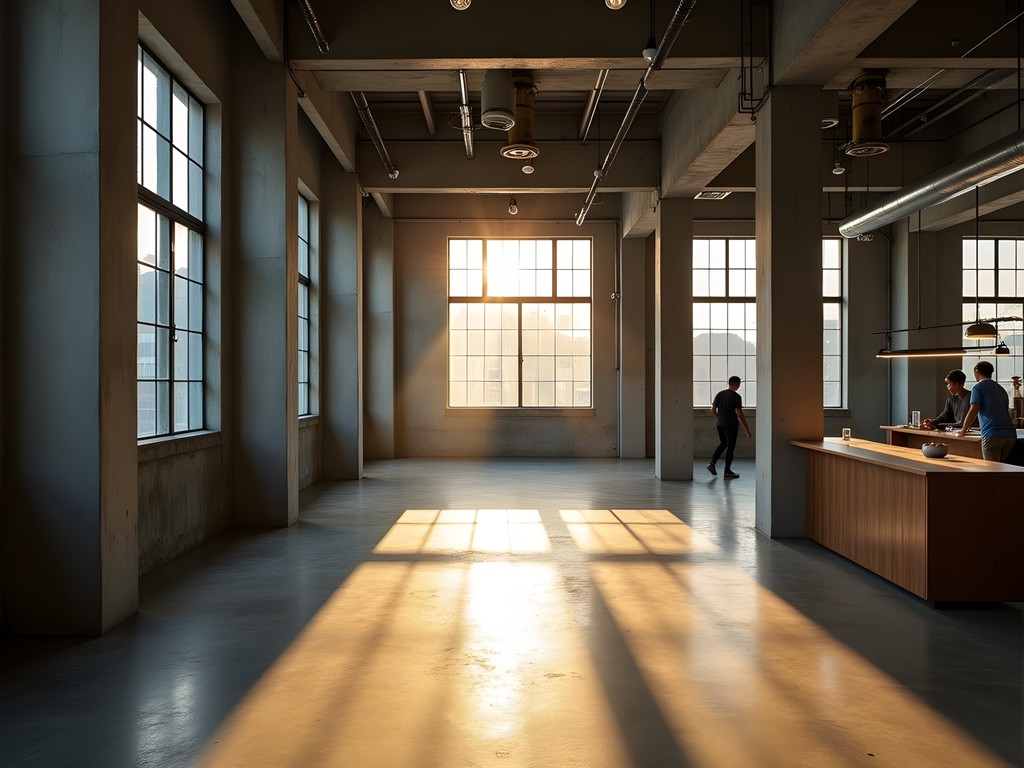
💡 Pro Tips
- Visit industrial areas on weekdays when creative businesses are open and you can capture the interplay between work and architecture
- Look for reflections in the many glass and metal surfaces of converted industrial buildings
- Use architectural lines as framing devices for more dynamic industrial compositions
Walled City Remnants and Urban Mythology
While the infamous Kowloon Walled City was demolished decades ago, its legacy lives on in several photogenic locations that most tourists overlook. As someone fascinated by how history shapes physical spaces, I found these sites particularly compelling for photography that tells deeper stories about Hong Kong.
Kowloon Walled City Park now occupies the former settlement's footprint, but keen eyes can spot original foundations, salvaged architectural elements, and informative displays. I discovered that photographing these historical fragments against the manicured Chinese garden creates powerful visual metaphors about Hong Kong's complex relationship with its past. The autumn season brought particularly beautiful light to the park in the late afternoon.
Less known is the Mei Ho House in Shek Kip Mei, one of Hong Kong's earliest public housing blocks, now preserved as a youth hostel and heritage museum. Its distinctive H-shaped structure and external corridors offer compositions reminiscent of the Walled City's famous density but in a more accessible setting. The museum contains remarkable photographs of the area's development that provide context for your own images.
Perhaps the most atmospheric location is the Chi Lin Nunnery and adjacent Nan Lian Garden in Diamond Hill. While not directly connected to the Walled City, this Tang dynasty-style complex sits in the shadow of dense housing estates that echo the Walled City's vertical intensity. The juxtaposition of traditional Chinese architecture against towering apartments creates compositions that speak to Hong Kong's ongoing negotiation between tradition and urban development.
For these historically significant sites, I found myself switching between wide contextual shots and detailed studies of textures and architectural elements. The stories these places tell are both grand and intimate—requiring both perspectives to capture fully.
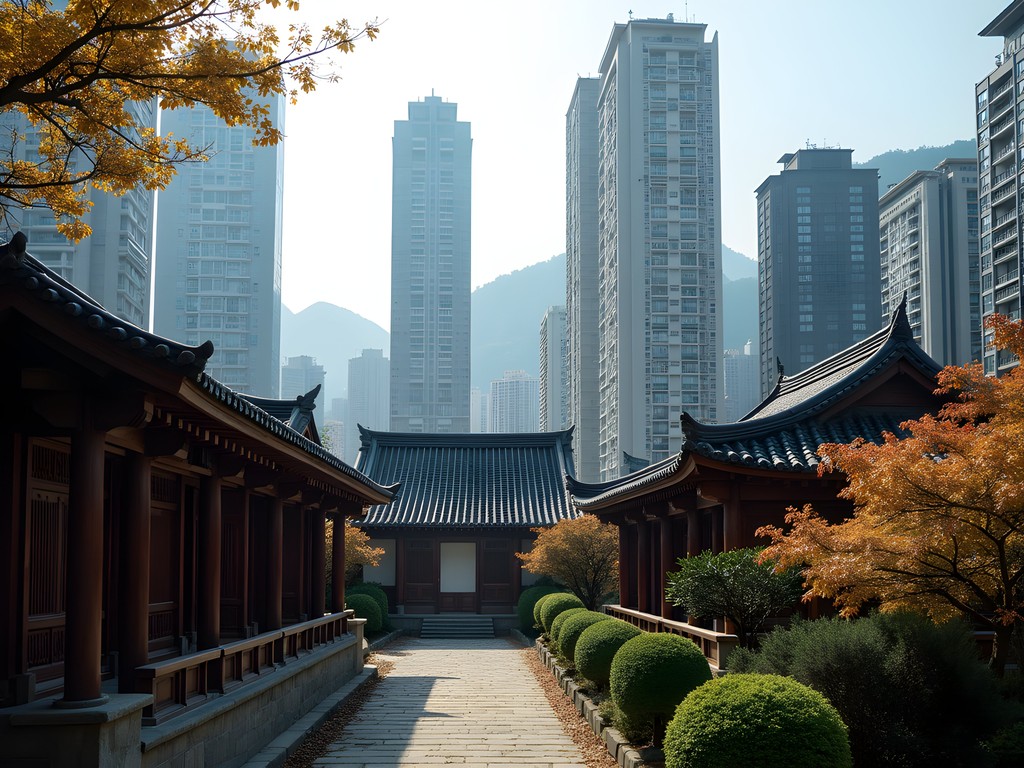
💡 Pro Tips
- Visit Kowloon Walled City Park early on weekday mornings to photograph the historical elements without crowds
- Look for compositions that juxtapose historical fragments against modern city elements for visual storytelling
- Research historical photographs before visiting to identify specific angles that show change over time
Forgotten Railway Heritage
My passion for heritage transportation led me to several overlooked railway locations that offer unique photographic opportunities away from Hong Kong's more famous transit spots. These places tell visual stories about connectivity and progress that have shaped the territory's development.
The former Tai Po Market Railway Station, now preserved as the Hong Kong Railway Museum, offers free access to vintage rolling stock and colonial-era architecture. I arrived early on a weekday morning to find the place nearly empty, allowing unobstructed compositions of the station's distinctive clock tower against autumn skies. The preserved train carriages with their rich wooden interiors create opportunities for atmospheric detail shots that speak to an earlier era of travel.
More adventurous photographers should seek out the abandoned Ma On Shan mining railway. Several concrete bridge supports and overgrown track beds remain accessible via hiking trails, creating haunting compositions where nature reclaims industrial infrastructure. The dappled light through fall foliage created perfect conditions for these shots, with the red and gold leaves providing color contrast against weathered concrete.
My most unexpected railway discovery came at Fo Tan station, where a little-known elevated walkway provides a perfect vantage point for panning shots of trains with mountains as backdrop. During the golden hour, I captured several long-exposure images of trains arriving and departing, their motion blur contrasting with the solid permanence of the landscape beyond.
For these railway shoots, I found my variable ND filter invaluable for controlling exposure during daytime long exposures. The ability to adjust light reduction on the fly meant I could quickly adapt to changing conditions while maintaining the motion effects I wanted in my train photography.
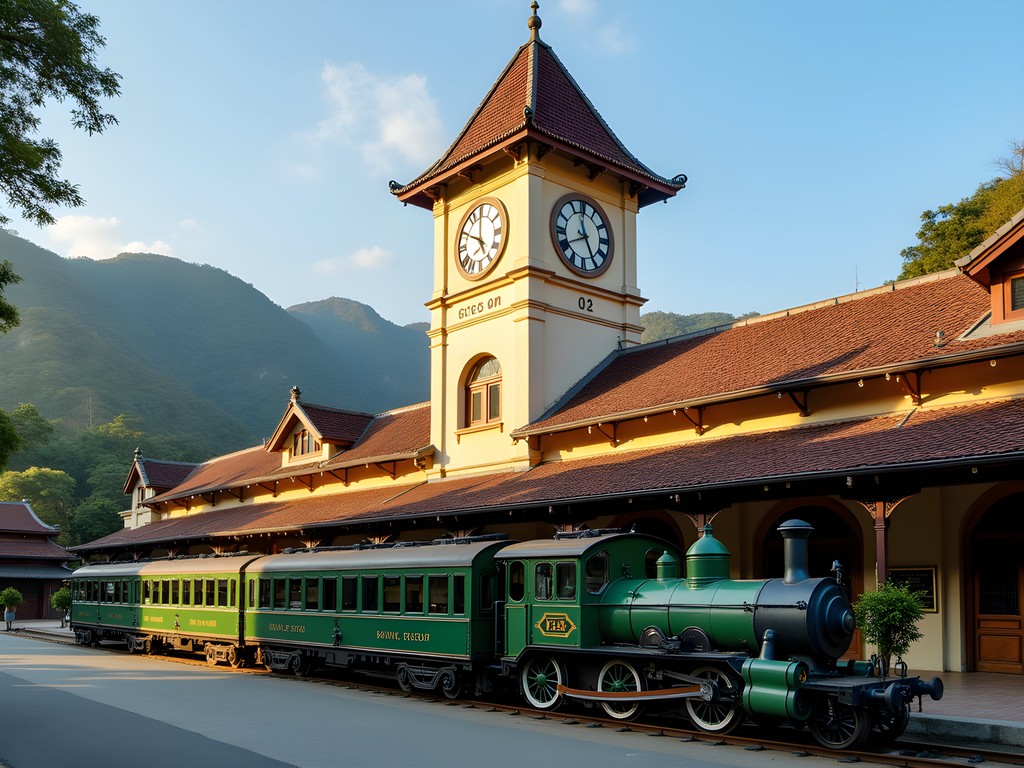
💡 Pro Tips
- Use a variable ND filter for daytime long exposures of moving trains against static backgrounds
- Visit the Railway Museum on weekdays before 11am to avoid school groups and tour parties
- Research historic railway maps before exploring abandoned sections to identify the most photogenic vantage points
Final Thoughts
As I packed away my camera on my final evening in Hong Kong, I reflected on how this remarkable city rewards those willing to venture beyond the obvious. The 12 locations I've shared reveal a Hong Kong of contrasts and continuity—where heritage and innovation coexist in visually compelling ways. What makes these spots truly Instagram-worthy isn't just their photogenic quality, but the stories they tell about Hong Kong's past, present, and possible futures. As a sculptor, I've always believed that the most powerful images reveal something about form and material that words alone cannot express. Hong Kong's hidden corners offer exactly this kind of visual poetry to those with patient eyes. Whether you're visiting for a dedicated photography trip or simply looking to capture more meaningful memories, I hope these locations inspire you to see Hong Kong through a different lens. The city awaits your unique perspective.
✨ Key Takeaways
- The best Hong Kong photos often come from locations where historical heritage meets modern development
- Fall offers ideal photography conditions with clear skies, comfortable temperatures, and beautiful light
- Early morning and blue hour provide the most atmospheric lighting conditions for urban photography
- Learning about the history and context of locations adds depth and storytelling to your images
📋 Practical Information
Best Time to Visit
October-November (fall)
Budget Estimate
$100-150 USD per day excluding accommodation
Recommended Duration
5-7 days
Difficulty Level
Moderate
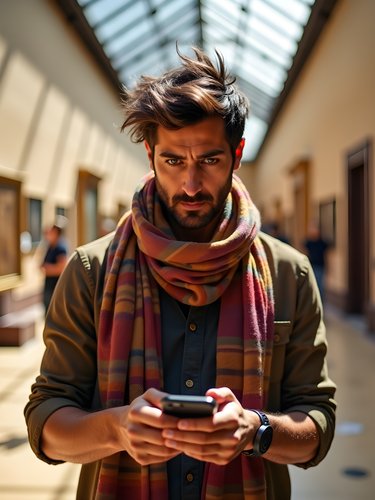
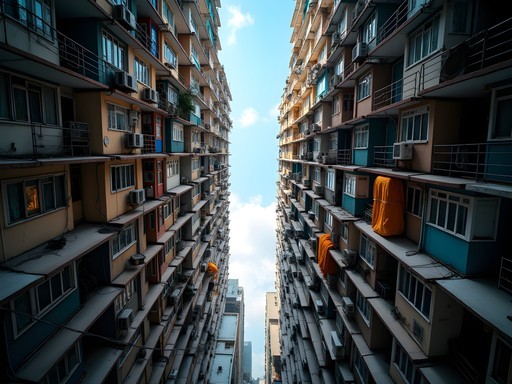
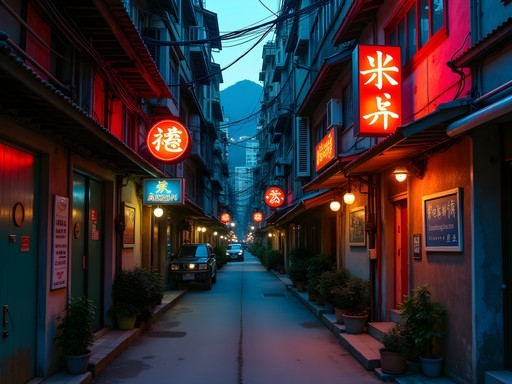
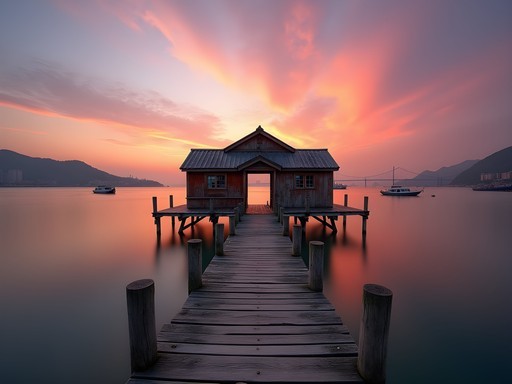
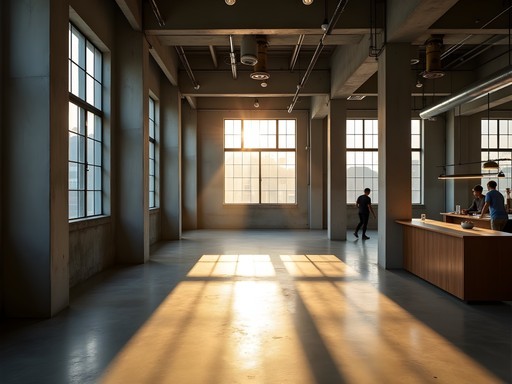
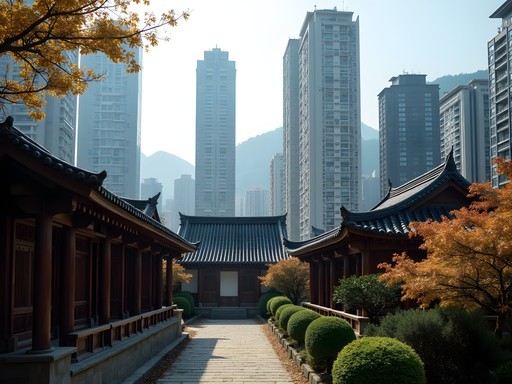
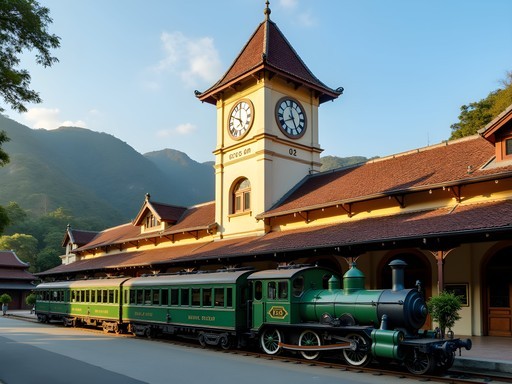


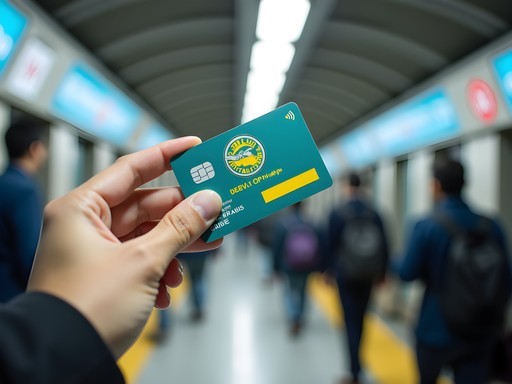
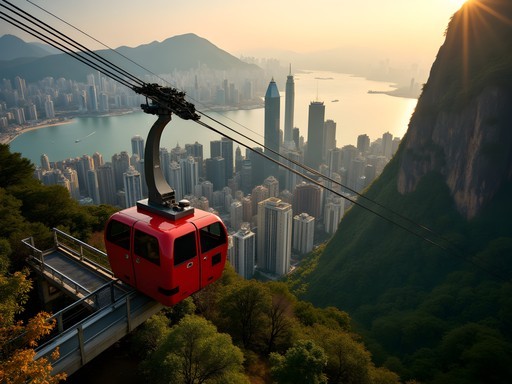
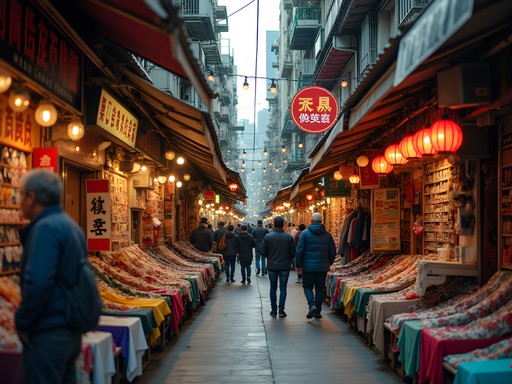
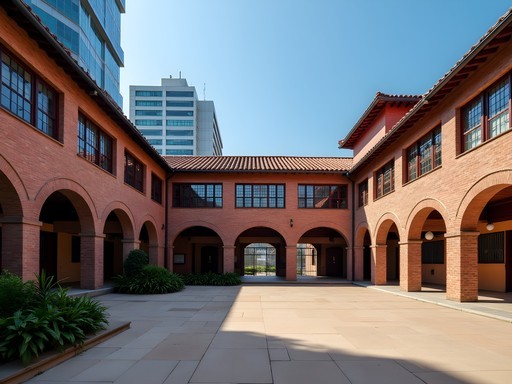
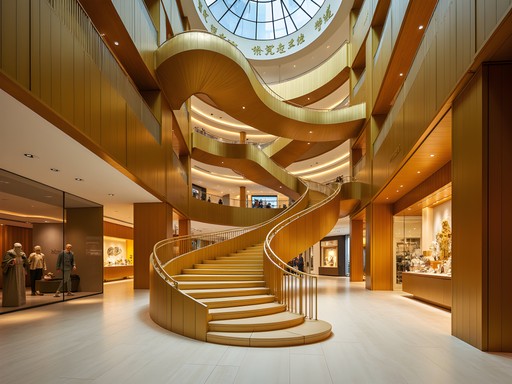
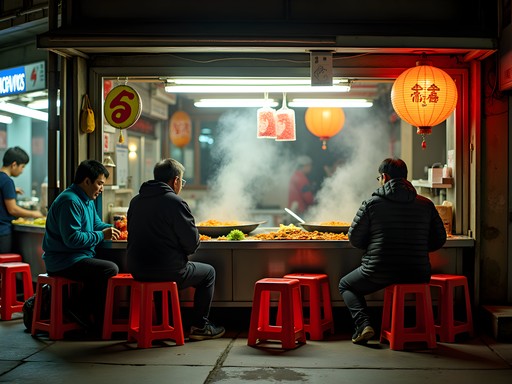
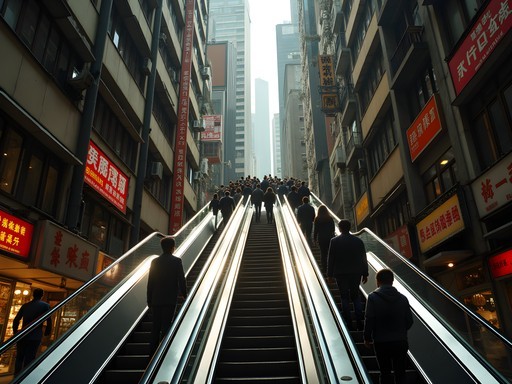
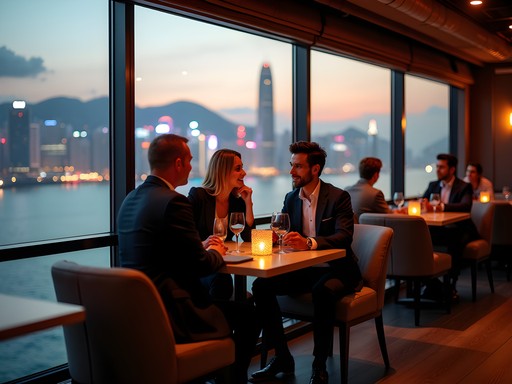
Comments
journeypro
Love this post! I'm planning a Hong Kong trip for February and I'm definitely adding these spots to my list. How easy is it to get to the water-based locations using public transport? Also, did you need any special permission for photography in some of these areas?
Trevor Sanchez
Public transport in HK is incredible - you can reach all these spots using the MTR and maybe a short taxi ride. No special permissions needed, but I'd avoid tripods in busy areas as security might ask you to move along. The ferry perspectives are my favorite - just hop on the Star Ferry at different times of day!
journeypro
That's super helpful, thanks! Can't wait to try these spots out.
adventurequeen
The MTR is so easy to use! Make sure to get an Octopus Card right away.
Sophia Gomez
Trevor, this is exactly the kind of content I've been searching for! I'm heading to Hong Kong next month for a business trip and was hoping to squeeze in some photography time between meetings. The vertical urban canyons section really speaks to me - I've always been fascinated by Hong Kong's architectural density but didn't know where to capture it beyond the standard shots. During my last visit in 2021, I only managed to see the typical spots. I'd love to know what time of day you'd recommend for the industrial heritage areas? And did you feel safe wandering around with camera equipment in the less touristy neighborhoods?
Trevor Sanchez
Hi Sophia! For the industrial areas, early morning (around 7-8am) gives you amazing light and fewer people. I felt completely safe everywhere with my gear, just be discreet as always. The old factory district in Kwun Tong is especially photogenic around sunset too!
Sophia Gomez
Thanks so much, Trevor! Early morning works perfectly with my schedule. I'll be packing my mini tripod for those urban canyon shots. Can't wait!
adventurequeen
These spots are amazing! I've been to Hong Kong twice and never knew about the Ghost Signs area. Adding it to my list for next time!
journeypro
Same! I always stick to the typical tourist spots. Definitely checking out those industrial areas next time.
adventurequeen
The water perspectives look incredible too. I never thought about seeing HK from that angle!
hikinghero
Just got back from HK and used this guide extensively - thank you! One tip for the floating villages section: take the ferry to Cheung Chau island early on a weekday. Way fewer tourists and the morning light on the fishing boats is incredible. Also found an amazing wall mural in an alley near Man Mo Temple that wasn't mentioned here but definitely worth checking out!
escapemood9116
Those night shots of the narrow alleys with all the neon are incredible! What camera settings did you use to capture the light so perfectly?
Trevor Sanchez
Thank you! For the neon shots I typically used f/2.8, ISO 800, and played with shutter speeds between 1/15 and 1/30. The trick was finding a stable surface to rest the camera since tripods can be cumbersome in those narrow spaces.
Ana Robinson
Trevor, your post couldn't have come at a better time! We just returned from Hong Kong with our kids (7 and 9) and used your guide to find some amazing photo spots. The children absolutely loved the 'Monster Building' in Quarry Bay - they called it the 'Lego tower' and counted all the different colored air conditioning units. We also discovered another gem not on your list - the rainbow-colored basketball court at Choi Hung Estate. It was crowded with photographers early morning, but cleared out by afternoon. My daughter's Instagram post there got more likes than anything I've ever posted! For families reading this, most of these spots are totally kid-friendly and make for great scavenger hunt activities.
Trevor Sanchez
Ana, that's amazing! Can't believe I forgot about Choi Hung Estate - definitely should have made the list. Love that your kids enjoyed the Monster Building too! Thanks for adding these family perspectives.
luckyvibes
Did you feel safe wandering around to find these hidden spots? Going to HK next month and wondering if I should explore solo or with a guide.
hikinghero
Not OP but I felt super safe in Hong Kong even at night. Public transport is amazing and people were helpful when I got lost. Just keep Google Maps downloaded offline just in case!
Trevor Sanchez
Completely agree with @hikinghero - Hong Kong is one of the safest cities I've explored. I wandered around at all hours and never felt uncomfortable. The MTR makes it super easy to get around too!
exploreblogger
What camera setup did you use for those night shots of the urban canyons? The lighting balance is perfect!
Trevor Sanchez
I used my Sony Alpha with a 16-35mm f/2.8 lens for most of those shots. For the night photography, a tripod is absolutely essential - I used my travel tripod which is compact enough to carry around all day.
exploreblogger
Thanks! Been looking for a good travel tripod that's actually portable. Will check that one out!
Mason Sullivan
Trevor, this brought back so many memories! I spent three weeks in Hong Kong last year, staying in a tiny apartment in Sham Shui Po, and discovered many of these same spots just by wandering aimlessly. The contrast between the ultra-modern and the traditional is what makes HK so photographically rich. One spot I'd add to your list: there's a public housing estate in Choi Hung with a basketball court on the roof that's painted in rainbow colors. Go early (like 6am early) before the Instagram crowds arrive, and you'll have an incredible urban composition with the housing blocks rising behind the colorful court. Your section on industrial heritage reminded me how quickly these places are disappearing. Several spots I photographed in 2021 are already gone, replaced by new developments. That's what makes posts like yours so valuable - documenting these transitional spaces before they're lost forever.
Bryce Diaz
Trevor, your eye for hidden spots is incredible! I was in Hong Kong last year and completely missed the industrial heritage areas you mentioned. I did stumble upon an amazing noodle shop in Sham Shui Po while hunting for those ghost signs you mentioned. The owner had photographs from the 60s showing how the neighborhood changed. Ended up spending three hours there talking with locals who showed me their own photo collections of vanishing typography. Sometimes the best photos come from these unexpected connections. Next time I'll definitely check out those water-based perspectives - the floating villages look fascinating!
Venture X
Premium card with 2X miles, $300 travel credit, Priority Pass